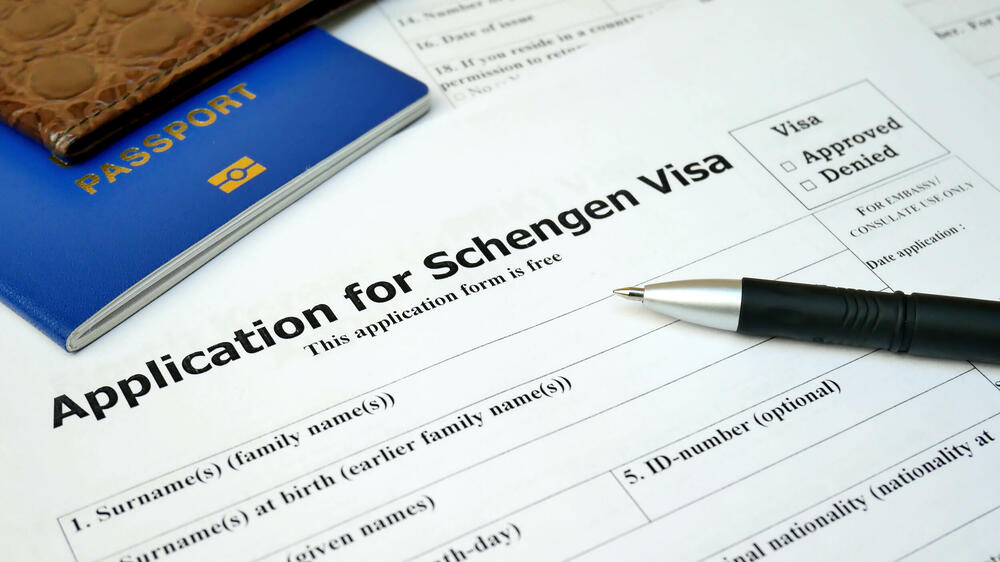In this blog, we will explore the origins and purpose of the Schengen Agreement, the key features of the Schengen Zone, and the current members of the area. We will also delve into Montenegro's status in the European Union (EU) and the implications of Schengen membership for the country. Finally, we will discuss the steps taken by Montenegro in its journey towards Schengen candidacy and the potential benefits of being a Schengen country. So, let's dive in and unravel the complexities of the Schengen Agreement!
Understanding the Schengen Agreement and its Significance

Before we delve deeper into the topic, it is essential to understand what the Schengen Agreement is and why it holds such importance. The Schengen Agreement, named after the village of Schengen in Luxembourg where it was signed, is an agreement between several European countries. It falls under the ambit of the European Union (EU) and has been instrumental in creating the Schengen Area – a territory where internal borders have been abolished, allowing for the free movement of people, goods, services, and capital without customs control. This has significantly simplified travel within the zone, eliminating the need for border checks and visa requirements when moving between member states. Now, let's explore the origins and purpose of this agreement in more detail.
Origins and Purpose of the Schengen Agreement
The Schengen Agreement, signed in 1985, marked a significant milestone in the process of European integration. Its primary goal was to create a single territory without internal borders, promoting the free movement of people, goods, services, and capital. The agreement aimed to enhance cooperation and coordination between the police and judicial authorities of the member states, ensuring the smooth functioning of internal security and justice within the zone. As of now, the Schengen Agreement has been adopted by 26 European countries, which include both EU member states and non-EU countries, making it one of the most significant achievements of the European continent in terms of abolishing common borders.
The agreement established common rules that member countries must adhere to, ensuring the implementation of border control measures at external borders to maintain the security of the zone. Simultaneously, it also imposed obligations on member states to harmonize their visa policies, resulting in the Schengen Visa, a document that allows non-EU citizens to travel freely within the area. By eliminating the need for passport control at internal borders, the Schengen Agreement revolutionized the way people travel within Europe, facilitating ease of movement and fostering a sense of unity among European countries.
Key Features of the Schengen Zone
The Schengen Zone, as created by the Schengen Agreement, has several key features that have transformed the way Europeans travel within the area. Let's take a closer look at these features to understand the essence of the zone.
One of the main aspects of the Schengen Zone is the elimination of border control between its member states. This means that individuals can travel freely without passport checks or other border control formalities, both at internal borders and when entering the zone from outside. Consequently, crossing internal borders within the Schengen Zone is as simple as crossing the border between two regions of the same country. This ease of movement has made the zone a popular travel destination, with millions of tourists benefiting from the seamless travel experience.

To facilitate the movement of non-EU citizens, the Schengen Visa was introduced. This visa allows holders to travel to any Schengen country without the need for multiple visas. This simplifies the process of planning and executing trips, as travelers can visit multiple countries within the Schengen Zone with a single visa, eliminating the hassle of obtaining separate visas for each country. However, it is important to note that the visa requirements and conditions may vary for UK residents depending on the country of origin and the purpose of the visit, including the need for a valid passport and valid travel or medical insurance.
Another crucial aspect of the Schengen Zone is the common management of external borders. Member states are responsible for the control and surveillance of the external borders of the zone, ensuring the security of the area as a whole. This collective effort ensures the smooth functioning of the zone and maintains the integrity of the free movement of people, goods, services, and capital within the area. Now that we have explored the key features of the Schengen Zone, let's move on to the next section to understand the current members of the area and the process of accession for candidate countries.
Current Members and Prospective Candidates of the Schengen Area
The Schengen Area currently consists of 27 European countries that have officially abolished all passports and all other types of border control at their mutual borders. This includes 23 member states of the European Union (EU) and four non-members, Iceland, Liechtenstein, Norway, and Switzerland. Additionally, Bulgaria, Cyprus, and Romania are currently in the process of joining the Schengen Area, with land borders being a crucial factor in the assessment process.
List of Current Schengen Member Countries
The current Schengen member countries encompass Austria, Germany, France, Italy, Spain, and several others. Through the abolition of passport control at their shared borders, these countries have established a cohesive travel area. This unification has enabled the fundamental principles of the single market and the unrestricted movement of individuals within the Schengen member states.
Montenegro's Status in the European Union
Montenegro, an official candidate for EU membership, has embarked on accession negotiations, reflecting its commitment to aligning with EU standards. Although not a full-fledged member of the EU, Montenegro has made progress in harmonizing with EU regulations. The association agreement with the EU demonstrates Montenegro's dedication to eventual EU membership negotiations, showcasing its efforts to fulfill the necessary criteria for accession. With these advancements, Montenegro continues to position itself as a potential member of the European Union, emphasizing its determination to meet the requirements for full integration into the European Union.
Benefits and Implications of Being a Schengen Country
Being a part of the Schengen Area offers several benefits and implications for member countries. One of the key advantages is the elimination of internal border controls within the area, facilitating seamless travel and trade. Additionally, Schengen countries adhere to common visa policies and border management protocols, simplifying travel regulations and border security. This has notable economic implications, as it promotes the free movement of goods and services, contributing to economic growth and development.
Furthermore, Schengen membership entails participation in police and judicial cooperation, enhancing security measures, and ensuring the protection of fundamental rights across the European Union.
Travel Freedom within the Schengen Area
Passport-free travel within the Schengen Area allows seamless movement across 27 European countries, as internal border checks have been abolished. This promotes free movement, trade, and economic cooperation among member states. Travelers benefit from the Schengen visa, which grants access to multiple countries within the zone, enhancing travel convenience and promoting tourism. The area's emphasis on open borders facilitates police cooperation and ensures fundamental rights. Additionally, it encourages free trade and supports the European Union's mission for closer integration. Residents and visitors can enjoy the diverse cultures and picturesque landscapes across Schengen states without the hassle of passport checks at every border, making it a popular choice for travelers.
Economic Impact of Schengen Membership
Joining the Schengen Area stimulates economic growth for member states, fostering trade, tourism, and investment. This leads to increased job opportunities and economic stability, thanks to the single market and free movement of goods and services. Cooperation under the Schengen Agreement promotes economic development and integration, enhancing the overall prosperity of member countries within the European Union. The elimination of internal border controls facilitates seamless movement, further contributing to economic growth and stability.
Conclusion
To conclude, Montenegro is not currently a member of the Schengen Area. However, its citizens can enter countries that are members of Schengen Area without visas since 2009.
Bonus video:





